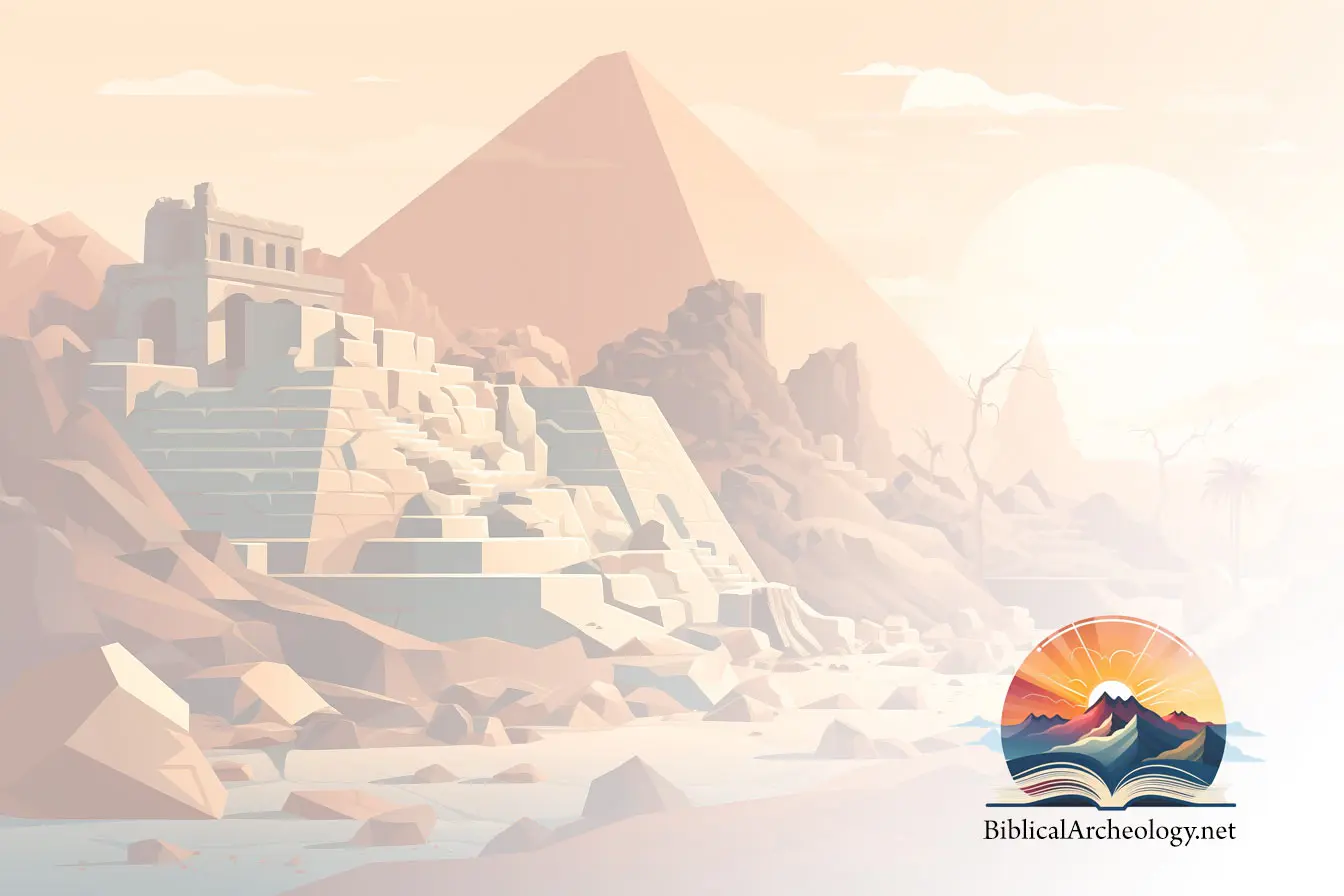The September 2004 edition of Biblical Archaeology Review has devoted 21 pages to the latest archaeological information on Caesarea, the brain child of Herod the Great, and today a major tourist attraction in Israel. It is on the Mediterranean coast 60 km north of Tel Aviv.
Originally this city was called Stratos, named after Strato, king of Sidon in the 4th century BC. There are no natural harbours on the east coast of the Mediterranean Sea, but Herod the Great recognised its potential and in 22 BC built a spectacular city and artificial harbour at the site, and called it Caesarea in honour of the Roman Emperor Augustus Caesar.
The outstanding features of this city were the hippodrome, the stadium, the theatre, Herod’s royal palace, the harbour, and the aqueduct which funnelled water into the city from Mount Carmel 17 km to the north-east. Recent excavations have shed a lot of new light on these remarkable features.
I first visited Caesarea in 1958. I had travelled from India by car and caravan with my wife and four children and we arrived at Caesarea after darkness had fallen. We just pulled up near the sea shore but in the morning when I stepped out of the caravan I was surprised to see the outline of a theatre. It was completely buried, but the semi-circular shape told me that a theatre lay buried beneath the earth.
The following year an Italian team started excavating the theatre. They toiled for four years exposing a platform and the stone seats that could have held 5,000 spectators. Subsequently the Israelis restored it so that musical functions could be held there. Now it accommodates 3,800 spectators, and in 1983 the opera Aida was performed here. It is the largest theatre that has been excavated in Israel.
In 1961 the Italians made a sensational find. It was a black slab of stone that had originally stood in a public building but was subsequently used as a piece of building material. It had an inscription on it reading “Tiberium (a temple) which Pontius Pilate the Prefect of Judea dedicated.” It was the first archaeological evidence ever found testifying to the existence of Pontius Pilate who tried Jesus Christ and allowed him to be crucified.
It was also here that another dramatic event occurred. Acts 12:20-23 says, “Herod had been very angry with the people of Tyre and Sidon, but they came to him with one accord, and having made Blastus, the king’s chamberlain their friend, they asked for peace, because their country was supplied with food by the king’s country. So on a set day Herod, arrayed in royal apparel, sat on his throne and gave an oration to them. And the people kept shouting, the voice of a god and not of a man. Then immediately the angel of the Lord stuck him, because he gave not God the glory: and he was eaten by worms and died.”
Writing in BAR Kenneth Holum said, “In 44 BC the Jewish king Agrippa, king of Judea, stood in the theater of Caesarea, clothed in a garment woven of silver threads that glittered in the first rays of sunlight. . . The king’s flatterers chanted with one voice, ‘Be merciful to us,’ adding ‘for if before we feared you as a man, now and henceforth we confess that you are more than human.’ Agrippa did not reject this adulation, which dangerously approached idolatry, nor did he admonish his flatterers for their explicit impiety. Hence God punished him with a sharp pain in his belly, from which he died in agony five days later. That at any rate, is the account of the contemporary Jewish historian Josephus, who may have witnessed the event in the Caesarea theatre and later recounted the story in his Jewish Antiquities. (19:343-51). In the New Testament, the author of the Acts of the Apostles recounts the same event. . . That the same event is told in two independent and near-contemporary texts increases our confidence that the event actually occurred.” p. 38
The hippodrome which was further inland was even more spectacular. It was 500m long and 90m wide and could accommodate between twenty and thirty thousand spectators. In the centre was a tall granite obelisk from Egypt. When it was excavated by Israeli archaeologists it was broken into three pieces which were put together in 2001 and are now standing on a platform in its original position. It was also here that “Christian martyrs were killed by wild beasts for refusing to offer sacrifices to the Roman gods during the early years of the fourth century.” p. 35.
Bishop Eusebius lived at this time and was an eye-witness to some of these harrowing scenes. He wrote, “They were taken into the amphitheatre to face the wild beasts. . . They were mauled by the beasts, and endured every torment that the frenzied mob demanded and howled for.” Eusebius The History of the Church p. 199
“Did any man see them without being amazed at the merciless floggings and the endurance displayed under them by those truly astounding champions of pure religion; at the ordeal with man-eating beasts which came directly after the floggings when they were attacked by panthers, bears of different kinds, wild boars and bulls goaded with red-hot irons; at the unflinching courage of those noble people in the face of every one of the beasts? When these things were going on I was there myself, and there I witnessed the ever-present divine power of Him to whom they testified. . . They stood naked, and in accordance with their instructions, waved their hands to attract the animals to themselves.” pp. 335, 336
The stadium has also been recently excavated. It extends along the water front more than 300 metres in a long semi-circle. On the west was the sea, and built up along the long east side were the tiered seats giving the 5,000 spectators a close look at the competing runners or chariot drivers against the background of the sparkling waters of the Mediterranean. It was a brilliant concept.
The aqueduct was first built in Herod’s time and came from a spring on Mount Carmel through a series of above-ground channels and underground tunnels, one of which went through a hill for 420m. In the 2nd century AD in the time of Hadrian another channel was added on the east side of the first channel. Both fell into disuse at the end of the Byzantine period.
Jutting out from the coast just west of the theatre was a small rocky promontory. The ingenious Herod – or one of his planners – decided to build a magnificent summer palace on the promontory. The building must have been around the edge of the outcrop of rock and in the centre they dug a swimming pool. Herod seemed to have been fond of swimming because he had pools at most of his other palaces. It is thought the pool may have been filled with fresh water for more congenial swimming. The palace was in an ideal location to catch the summer breezes blowing off the sea.
Within the triangle formed by the theatre, the palace and the stadium was an administrative building. This was probably the place where Paul was hailed before Felix, Festus, and Herod Agrippa to answer for his faith. Acts 24-26. Paul’s arguments were so convincing that Agrippa was constrained to admit, “You almost persuade me to become a Christian.” Acts 26:28.
The harbour was a masterpiece of engineering and has been called a 20th Century wonder built 2,000 years ago. Huge blocks of stone up to 15m in length and 3m in width were dragged into the sea and made up the walls of the harbour. Even more astonishing were immense frames built underwater. Into these was pumped concrete. Normally concrete lowered into water will dissolve before it can set, but lime plaster mixed with scoria imported from Italy was used, and this set before it could be washed away, making huge solid blocks.
The artificial harbour extended an astonishing 500 metres out into the sea. To prevent debris accumulating on the harbour floor and reducing the depth for shipping the wall on the south side near the shore was only built up to the height of the sea level. As most of the waves broke over the top of the wall here at high tide the water was forced out of the harbour entrance, taking the debris with it. Thus the harbour was automatically dredged twice a day at every high tide.
But it all came to an end in the 13th century AD. The Crusaders conquered it in 1099 AD, lost it and recaptured it in 1128 AD and built a wall and moat around it, but it was finally destroyed by Sultan Baybars I in 1265 AD
David Down
Article used with permission of Diggins Online. You can find more useful material at Apologtetics Courses, Free Courses and Brethren Assembly. Secular materials can be found at Coins Encyclopedia and Guide For Income


